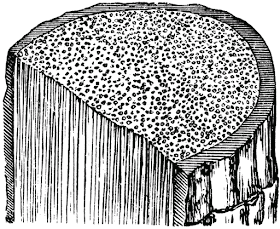A. The best pollinators for
fruit trees, hands-down, are honeybees. More specifically Italian honeybees,
the type that produce honey collected by beekeepers. They are workhorses when
it comes to pollinating fruit trees and vegetable gardens.
Other types of bees, solitary bees like the leafcutter
which cuts near perfect circles in the leaves of roses, grapes and basil, are
strong workers later in the year and important pollinators for late spring and
summer bloomers like alfalfa and clover.
 |
| Rosemary is a good winter and early spring flowering plant to encourage pollinators for spring pollination of fruit trees. |
Ants don’t contribute anything to pollination of fruit
trees in my opinion. I consider them mostly nuisance insects that contribute to
insect problems in fruit trees in a secondary way. How? They love aphids and
will defend them to their death against anything or anyone that threatens aphid
populations.
This short video is taken at our family farm in the Philippines. It shows Weaver ants, that create their nests in the canopies of trees, protecting some scale insects they have moved and are now farming on the branches of tropical fruit trees. Ants do the same thing in temperate environments but most of our ants have nests in the ground.
In fact, ants distribute aphids throughout a fruit tree
canopy similar to how we move cattle to new pastures. Aphids are common in the
spring of the year feeding on new growth of fruit trees. Their feeding causes
leaves to become sticky, roll and curl. Ants move mother aphids around to
increase populations and their own food supply for subterranean nests.
While feeding on plant leaf juices, aphids drip sugary
excrement that ants use for food inside their colony. Next time you find an
aphid problem in fruit trees, look at the ground nearby. You will see an “ant
mound”, an opening to a subterranean ant nest. There is a good reason for their
close association to aphids.
For this reason, I don’t like ants in orchards and I make
a point of eliminating ant colonies when I see them near fruit trees. Several
methods can be used to eliminate them but I find ant baits, taken back inside
colony, to be among the most effective. Seldom are ants beneficial when growing
plants for human food.











